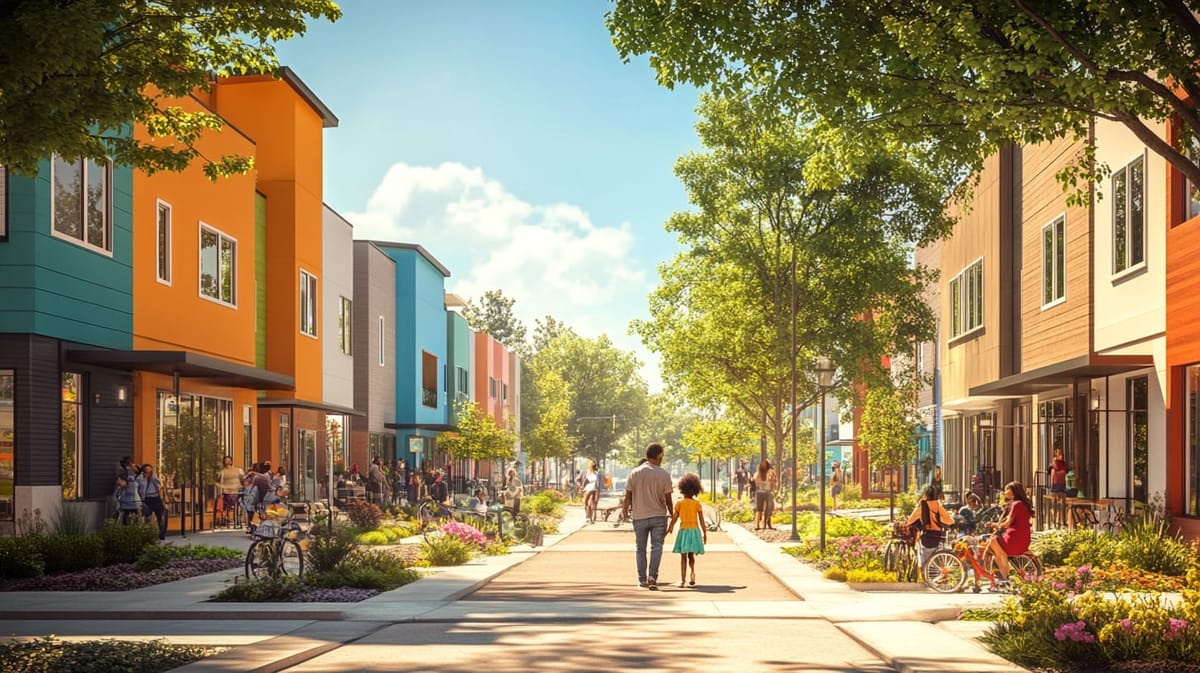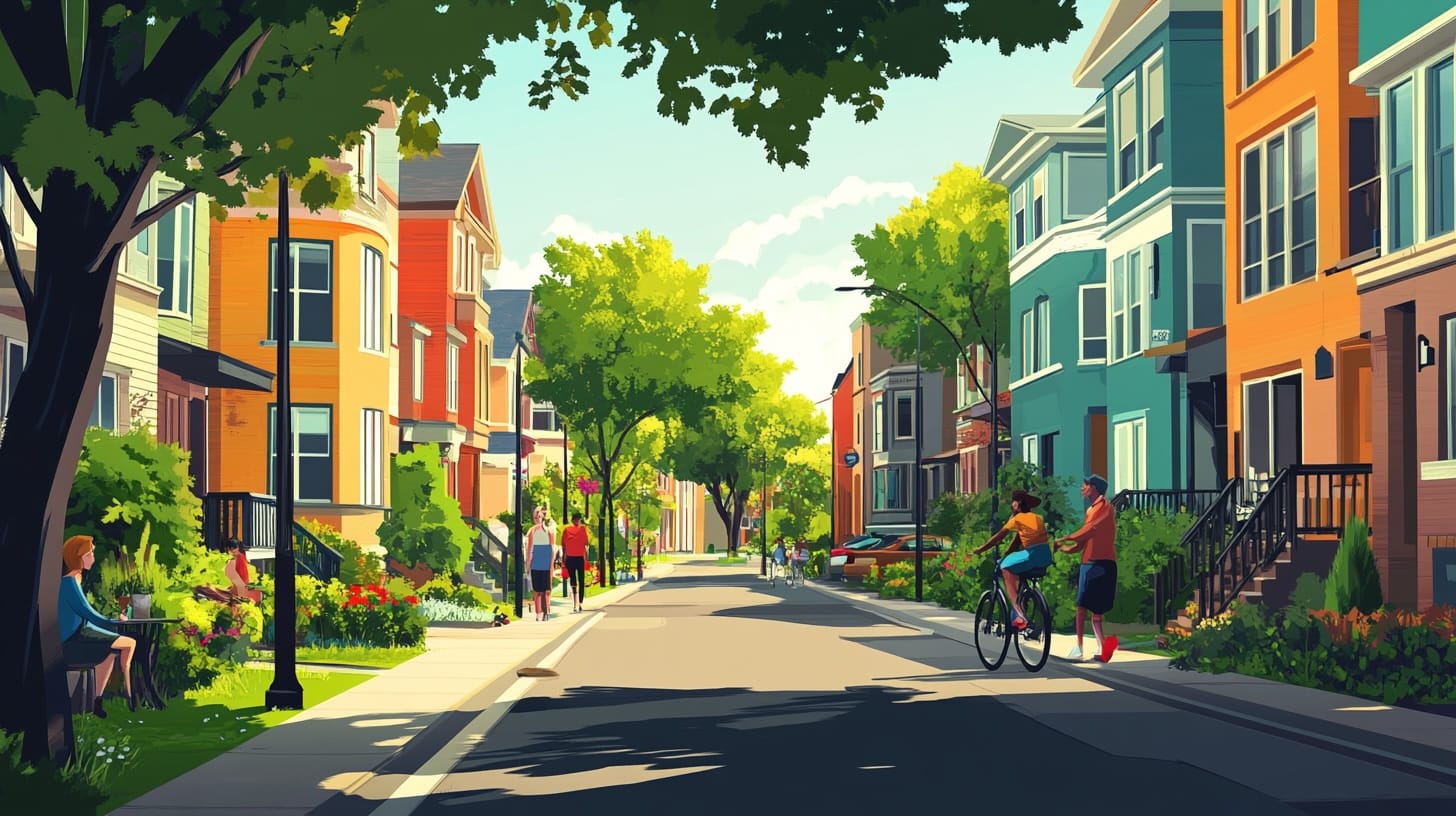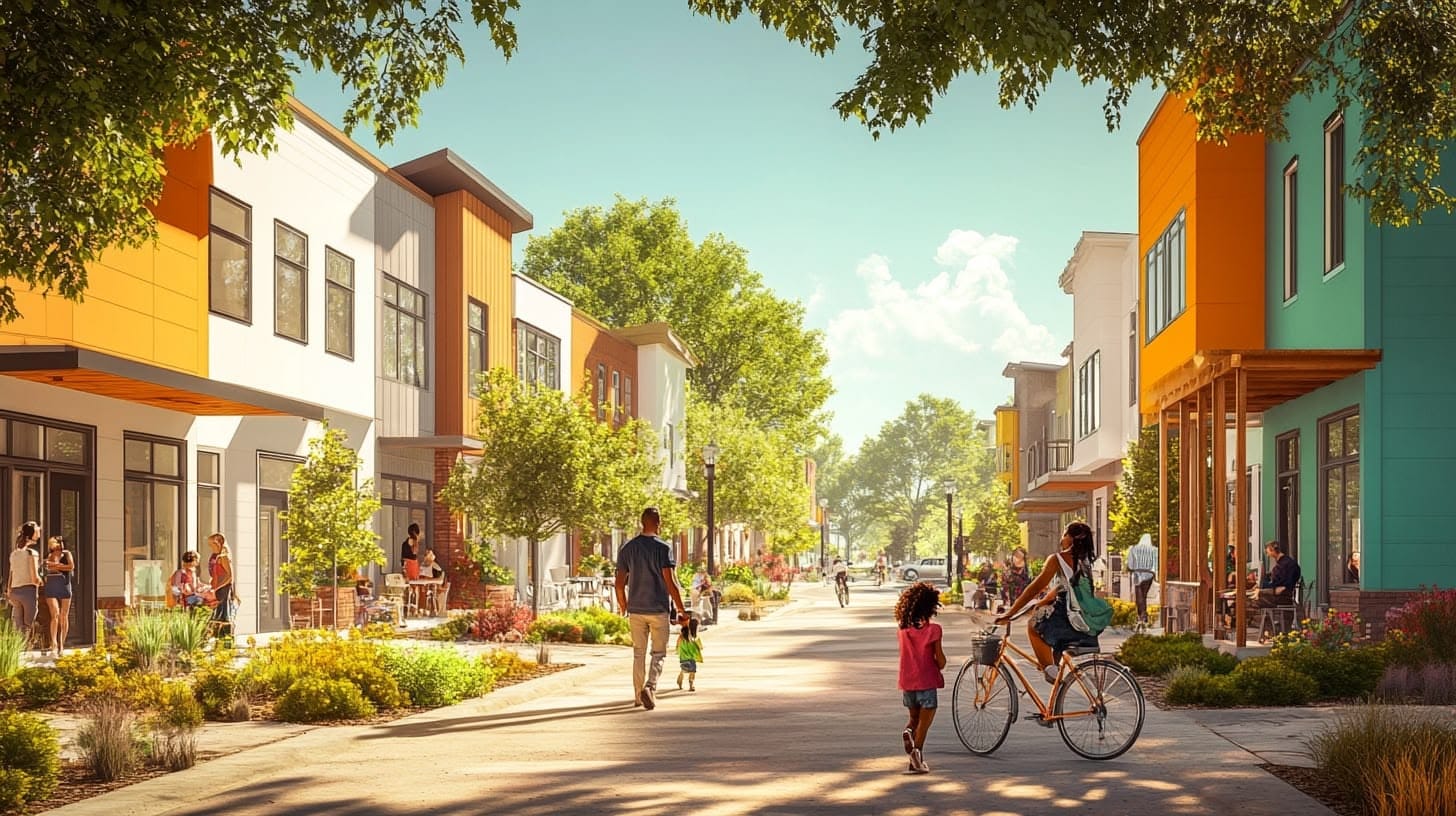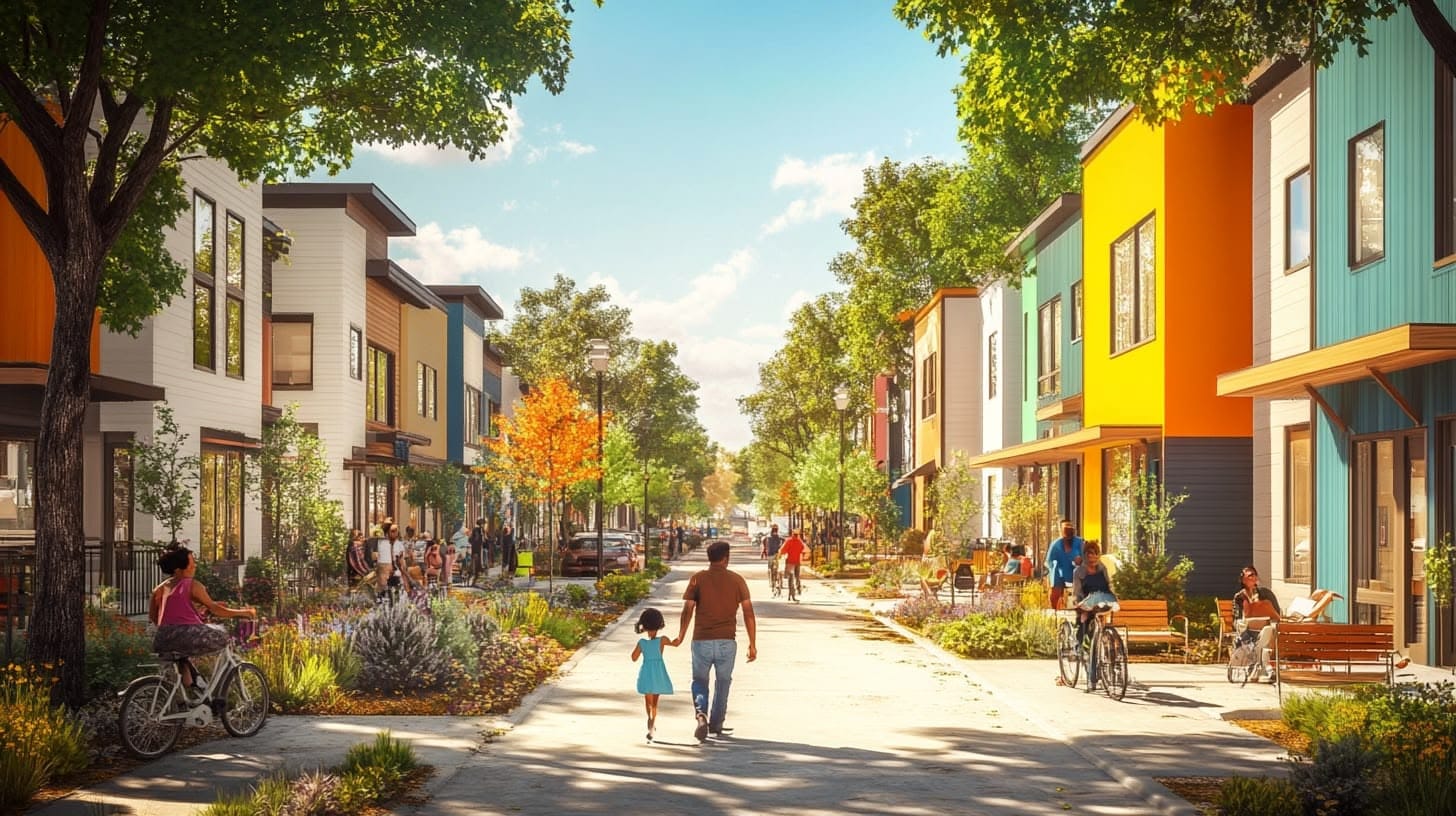Density is Fun: Why Ann Arbor’s Future Depends on a Good Plan
Ann Arbor’s next Comprehensive Plan is a chance to correct course. With rising demand and decades of exclusionary zoning, we must plan for more housing—of all shapes, sizes, and styles—to create a connected, inclusive, and future-ready city. Learn why density is essential now.

This is an on-going series on Density in Ann Arbor
Density might not be the first word that comes to mind when thinking about fun, but it should be! More neighbors mean more energy, more thriving local businesses, and more vibrant communities. This new web series explores how increasing density in Ann Arbor—through better planning, zoning, and housing policies—can make our city more affordable, sustainable, and welcoming. Whether you're a longtime resident, a renter looking for better options, or simply curious about how cities grow, this series will break down why density matters and how we can embrace it for a stronger Ann Arbor.
"Density is Fun" Web Series:



How I Got Here: A Personal Reflection
When I started thinking about this web series, Density is Fun!, I realized how little accessible, local information was available to help everyday residents understand the complex and often confusing world of land use, comprehensive planning, zoning codes, and how they shape our city.
Since launching this series—which I initially imagined as just a few posts—I’ve been encouraged to see several Ann Arbor City Council members publish thoughtful, clear explanations about the city’s comprehensive plan and why ending exclusionary zoning is essential for Ann Arbor’s future.
Ward 4 Councilmember Dharma Akmon recently published “Ann Arbor’s Comprehensive Plan Is Still Taking Shape—Here’s What You Need to Know”—a thoughtful, values-driven overview of where we are in the process, what the Comprehensive Plan will do (and won’t do), and why it matters. She draws from personal experience to explain how housing variety supports inclusive neighborhoods and lays out the city’s guiding principles around affordability, equity, and sustainability. It’s a great read if you want a clear-eyed look at how the plan is being developed and what to expect next.
Not to be outdone, Ward 1 Councilmember Lisa Disch weighs in with a powerful question: “Is it time for Ann Arbor to End Exclusionary Zoning?” Her recent newsletter is less a policy brief and more a public reflection—a mix of personal insight, historical context, and moral clarity. CM Disch doesn’t just explain what the Comprehensive Plan is; she invites readers to consider what kind of community Ann Arbor wants to be. She acknowledges fears, corrects common misconceptions, and makes a compelling case that zoning reform is not about destroying neighborhoods—but about making room for more neighbors. If you’ve been wondering what all the fuss is about, her letter is a thoughtful and accessible place to start.
In this post, I’m not going to repeat what they’ve already defined well—instead, I want to share how the comprehensive plan affects our city and, more importantly, what changes we need to see in it.
Let’s start with the basics.
An Outdated Plan for a Growing City
Ann Arbor’s current comprehensive plan was developed in 2009. Back then, the University of Michigan had a student population of about 41,674. Today, that number is over 54,455—and growing. That change alone illustrates how drastically the city’s needs have shifted. Yet our zoning laws and land-use policies haven’t kept pace.
A major turning point came with the evolution of R4C zoning—a policy originally intended to allow small-scale multifamily housing, but ultimately was used to restrict density from expanding beyond downtown and into surrounding neighborhoods. This created an artificial and problematic division: downtown is where density belongs, while neighborhoods are meant for single-family homes. That idea has shaped the city for decades, but it's not serving us anymore.
A Missed Opportunity: R4C Zoning and the Wall Around Downtown
In the early 1970s, city planners projected that Ann Arbor would grow to between 130,000 and 150,000 residents by 1980—within a footprint just slightly larger than today’s. They saw this level of density as a strength: something that would support transit, reduce infrastructure costs, and keep the city vibrant and connected. That was the vision. But we didn’t follow through.
Instead, a combination of annexation resistance, public mistrust, and zoning restrictions reversed course. Beginning in the 1960s and reaffirmed through the 2009–2014 R4C reform process, Ann Arbor gradually constructed an invisible ring around downtown—using zoning rules to contain density and block its natural expansion into nearby neighborhoods.
R4C zoning—originally meant to allow small-scale multifamily homes—became a battleground. New rules restricted lot combinations, enforced outdated parking requirements, and blocked common-sense renovations. Rather than welcoming new neighbors, the zoning code became a tool to keep neighborhoods frozen in time. The message was clear: density belongs downtown, but not next door.
A Second Chance to Get It Right
Today’s comprehensive plan gives us the chance to correct that course—not by trying to recreate the past, but by realizing the vision our city once had. Ann Arbor was meant to grow, and to do so in a smart, compact, inclusive way. We didn’t get there. But we still can. The question isn’t whether Ann Arbor can grow—it’s whether we’re ready to grow in ways that reflect our best values.
My Core Belief: Density is Not Just Fun, It’s Necessary
Let me be clear: density isn’t just a good idea—it’s essential for the kind of Ann Arbor we say we want to build. Here are five reasons why:
- Density is good for people’s wallets.
It reduces the cost of providing city services and makes infrastructure and public transit more efficient and affordable. - Density strengthens social connections.
During the COVID lockdowns, I saw more of my neighbors walking past my house than ever before. That walkability and connectedness foster community. I even moved my work setup outside just to connect with more neighbors. - Density is better for the environment.
I’m no expert on environmental policy, but this much is clear: more housing in the city means fewer emissions, greater energy efficiency, and less sprawl. Walkable neighborhoods reduce car dependency and help us live more lightly on the planet. - Density supports public health.
Compact, walkable neighborhoods make it easier to be healthy by default. When your everyday essentials—groceries, prescriptions, schools, third spaces—are accessible on foot or by bike, it enhances well-being. - Density aligns with our values.
Ann Arbor prides itself on progressive politics. But that means embracing policies that make our community more inclusive, equitable, and sustainable. More housing means more people can live here and thrive here.
Of course, I understand why some people are afraid of change. If you’ve owned your home for 20 or 30 years, this shift may feel like a loss of control or a reminder that time is passing. But holding onto exclusionary zoning won’t help us deal with change. It just limits who gets to live here.
As Octavia Butler wrote, change is not just inevitable—it’s sacred:
All that you touch
You Change.
All that you Change
Changes you.
The only lasting truth
is Change.
God
is Change.
What Needs to Happen
The number one change we need in our next comprehensive plan is a clear, bold vision and commitment to build more homes—of all shapes, sizes, and styles—to meet the needs of a growing city. Here’s what that includes:
- Acknowledging how much has changed in the past 15 years due to the expansion of the University of Michigan—now the state’s largest public university, second largest employer, a major driver of regional growth, housing demand, and the source of more than 13,000 new students and 22,000 new jobs since 2009.
- Admitting that our housing stock has not kept up. Ann Arbor builds roughly ~300 new housing units per year. That’s not enough to meet the growing demand.
- Reducing complexity in our zoning code. Our Unified Development Code is too complicated and burdensome. It needs to be streamlined so that building housing—especially diverse housing types like duplexes, triplexes, and townhomes—is not an uphill battle.
- Planning for future generations. The children in our elementary schools today should be able to imagine a future where they can live, work, and thrive in the city they grew up in. If we’re not planning for that future, what are we even doing?
At its heart, a comprehensive plan is a statement of vision and values. It imagines a future that does not yet exist and challenges us to shape it. We need a plan that dares to say: yes, there will be a place for you here. Yes, we will be a city of belonging, connection, and care.
I’ll leave the zoning deep dives and policy memos to the experts—and to the city council members who’ve already done a great job explaining the technical details. But from where I sit—as a neighbor, a parent, and a volunteer on the Planning Commission—I believe the most important thing we can do with our next comprehensive plan is to embrace the opportunity to build a city that works for everyone.
Ann Arbor’s best days are still ahead. But only if we choose them.
Up Next: More Neighbors, More Benefits – How Density Improves Ann Arbor
In the next installment, we’ll zoom in on how increased density can lead to a stronger, more connected city. From supporting local businesses and public transit to fostering vibrant neighborhoods and reducing social isolation, we’ll explore the many benefits that come when we make room for more neighbors. Let’s reframe density not as a burden—but as a community asset.


